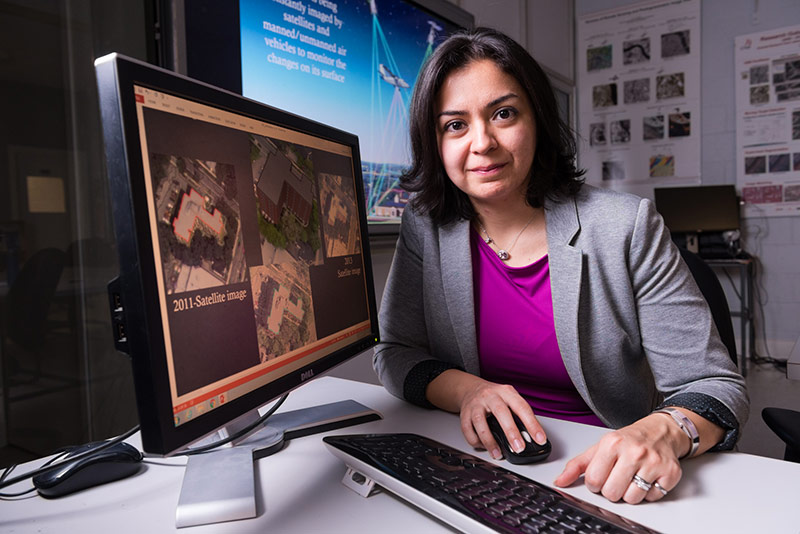Researching natural disaster management at UNB
Author: UNB Newsroom
Posted on Aug 21, 2019
Category: UNB Fredericton

Dr. Shabnam Jabari, an assistant professor in the department of geodesy and geomatics engineering at the University of New Brunswick in Fredericton, is focusing her research on natural disaster management, integrating Geographic Information Systems (GIS) with satellite and airborne images.
According to Dr. Jabari, the extent of a natural disaster is visible from satellite images. Her research involves combining satellite and airborne images with existing maps to perform an analysis through GIS to identify what buildings or roads are damaged and require immediate attention or evacuation.
“Urban areas suffer the greatest impact from natural disasters,” says Dr. Jabari. “In fact, it is one of the most difficult situations modern cities are facing at the moment.
“Larger cities are victim to threats of earthquakes, which can damage buildings and roads and put the lives of the local residents at risk,” says Dr. Jabari. “Although earthquakes are common on the west coast of Canada, I am also examining other natural disasters that impact other areas of the country, such as floods.”
Previously, Dr. Jabari conducted research on the 2018 Fredericton flood. By using new techniques that combined existing maps with additional technology, such as satellite images, Dr. Jabari was able to provide more accurate results with greater detailed information about affected areas.
In the future, Dr. Jabari hopes to provide solutions that will improve the quality of life for many people across the province. By expanding on existing technological advancements, Dr. Jabari hopes to help governments and social services agencies to improve response times when natural disasters occur.
“Time is the most critical component after a natural disaster occurs,” says Dr. Jabari. “The faster the affected areas can be identified, the faster public services and relief efforts, such as ambulances and firetrucks, are able to respond to immediate danger.”
Media contact: Angie Deveau
Photo credit: Joy Cummings
